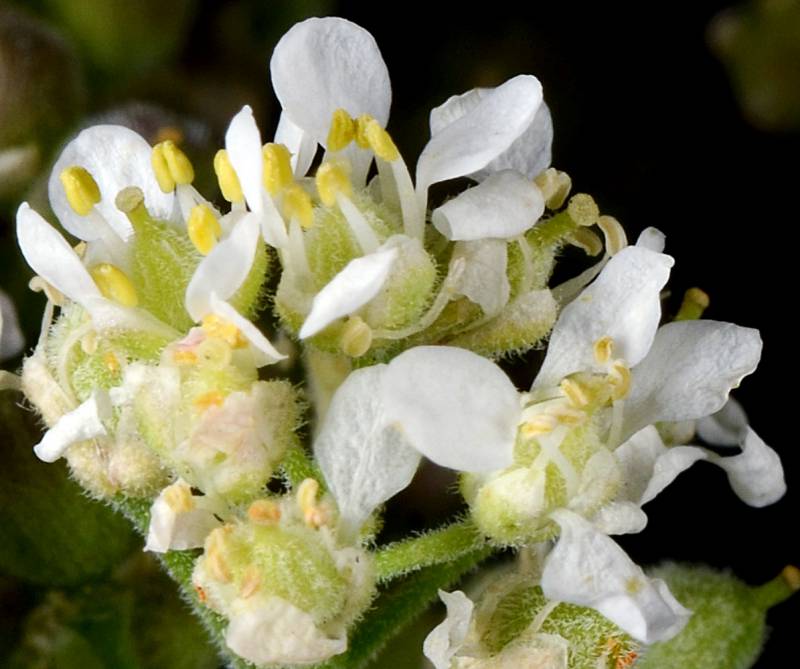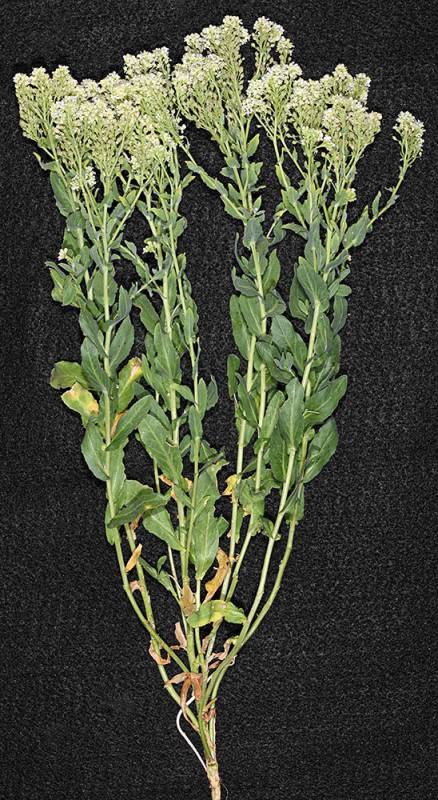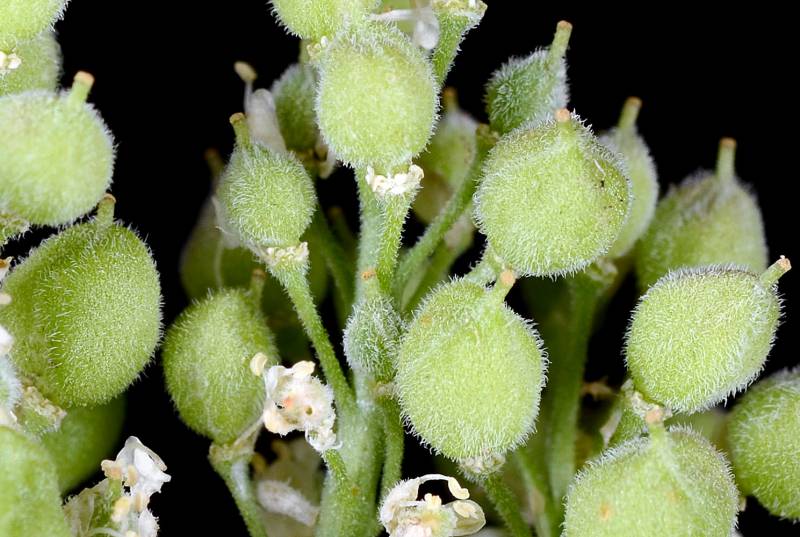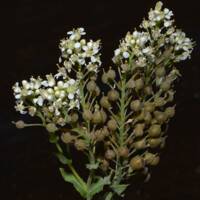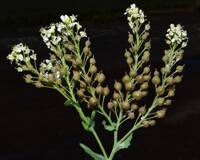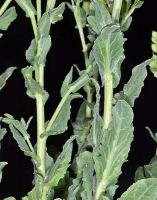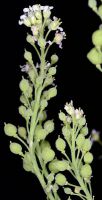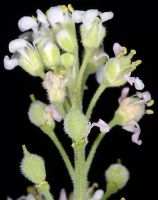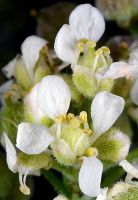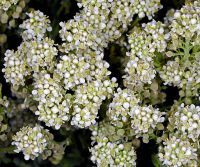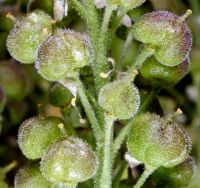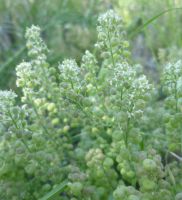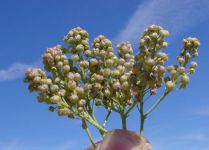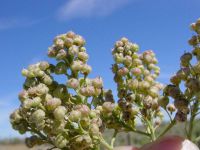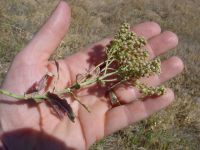Distribution: Occurring east of the Cascades crest in Washington; British Columbia to California, east to the northern Great Plains, Great Lakes region, and eastern U.,S.
Habitat: Disturbed soil, waste areas, in dry and moist places.
Flowers: April-August
Origin: Introduced from Asia
Growth Duration: Perennial
Conservation Status: Not of concern
Pollination: Bumblebees, bees, flies, beetles, wasps
Herbaceous perennial from strong rhizomes, the stems erect to decumbent, 2-5 dm. tall, puberulent to hoary-pubescent.
Leaves alternate, ovate-oblong to oblong-oblanceolate, denticulate to dentate, 4-10 cm. long, the lower ones petiolate, the upper sessile and sagittate-clasping.
Inflorescence of bractless, dense, numerous, rather flat-topped racemes; pedicles slender, 1 cm. long; sepals 4, 2 mm. long, early-deciduous; petals 4, white, 3-4 mm. long; stamens 6; style slender, 1 mm. long.
Silicles strongly inflated, obovoid-globose, acute at the base, 3-5 mm. long and 4-6 mm. broad, finely pubescent; seeds 1 per cell, 2 mm. long.
Separated from Cardaria draba by the pubescence on the silicle.
Publication: Novon. 12: 7. 2002.
Cardaria pubescens (C.A. Mey.) Jarm. var. elongata Rollins [Peck]
Hymenophysa pubescens C.A. Mey.
PNW Herbaria: Specimen records of Lepidium appelianum in the Consortium of Pacific Northwest Herbaria database
WA Flora Checklist: Lepidium appelianum checklist entry
OregonFlora: Lepidium appelianum information
E-Flora BC: Lepidium appelianum atlas page
CalPhotos: Lepidium appelianum photos

